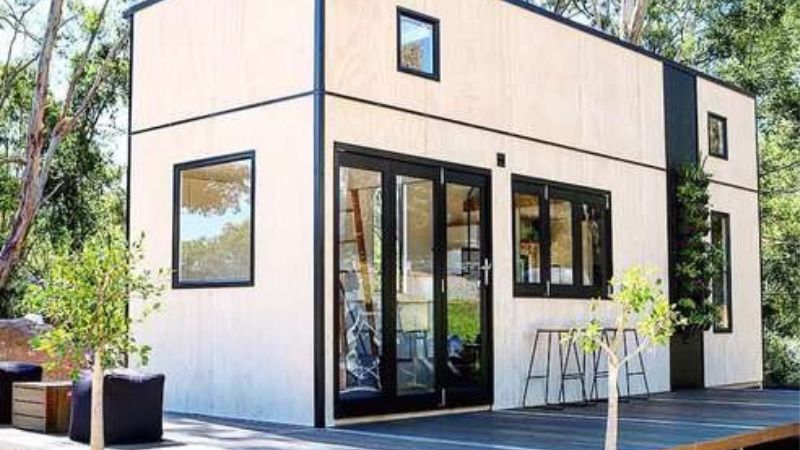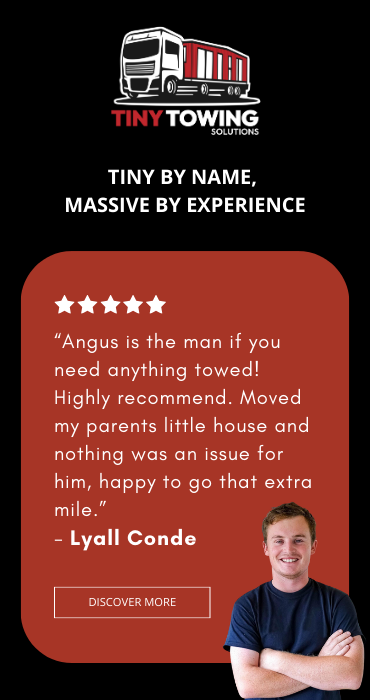Stay stealthy, stay happy: how to keep your tiny home off the radar.
So, you've got your heart set on living in a tiny house on wheels, but don’t fancy jumping through all the council hoops to get building consent on land you don’t own. Fair enough! You’re not alone. Here’s the lowdown on how you can set up your tiny house to keep the council off your back while still enjoying your cosy new digs.
Step 1: Choose Your Land Wisely
First things first – where you park your tiny house matters. A lot. Here’s what I’ve learned about finding the perfect spot:
-
Out of sight, out of mind: The less visible your tiny house is from neighbouring properties and public roads, the better. Think about tucking it away behind some trees or fences.
-
Mind the boundaries: Don’t park your house right up against the property lines. Give your neighbours some breathing room.
-
Blend in with the crowd: If there are already other tiny homes in the area, your house won’t stick out like a sore thumb. Safety in numbers, right?
-
Check for covenants: Some properties have restrictions (covenants) that could ban tiny homes altogether. Make sure to check before you park.
-
Avoid gated communities: Parking next to or in a gated community could invite unwanted scrutiny. It’s best to keep things a bit more low-key.
-
Know the property history: Has the property owner had any run-ins with the neighbours before? If so, you might want to reconsider. A friendly neighbourhood vibe is your best bet for staying under the radar.
Step 2: Build Smart and Keep It Movable
Now, onto the tiny house itself. The key to avoiding trouble is ensuring your house is classified as a “vehicle” rather than a “building.” According to the Land Transport Act 1998, a vehicle is “a contrivance equipped with wheels, tracks, or revolving runners on which it moves or is moved.” Here’s how to make sure you tick those boxes:
-
Your tiny house should always be on the trailer. If you take it off the wheels and put it on blocks or screw piles, it might be considered immovable, and that’s when the council might start seeing it as a building.
-
Keep those wheels on! Removing them or making any modifications that make your tiny house immovable is a big no-no.
-
Your trailer should have previously passed a WOF or COF and be able to pass this check again. Ideally, it should also be detachable, so you don’t have to take your entire house to the testing station or garage for repairs or a Warrant of Fitness (WoF).
-
Make sure your tiny house trailer has a proper chassis, brakes, suspension, and a drawbar that’s long enough to make towing a breeze. If it’s easy to move, it’s much more likely to be considered a vehicle.
Step 3: Stay Off-Grid or Keep It Simple
One of the main issues councils have with tiny homes is how they’re connected to services like power, water, and waste. The trick is to keep everything as temporary and portable as possible.
Power Options:
-
If you’re going off-grid, keep all your solar equipment within the tiny house. Fix solar panels to the roof, and create a small cupboard over the tow hitch for your inverter and batteries. Anything sitting on the ground might be considered a permanent fixture.
-
If you’re connecting to mains power, use a 16-amp caravan plug that’s easy to disconnect. Keep the house close to the plug to avoid voltage drop – the further away you are, the weaker the connection can get.
Wastewater Solutions:
-
To keep councils happy, use a mobile holding tank for your wastewater, which you can empty at a dump station. No permanent plumbing means fewer issues. Check the NZ Certified Self-Containment (CSC) requirements to ensure your tank is the right size.
Fresh Water Setup:
-
The easiest way to get fresh water is by connecting a drinking-water-safe hose to an outdoor tap. Alternatively, have water tanks installed within your trailer. Again, avoid anything that looks like a permanent plumbing connection.
Drainage:
-
Make sure any drainage connections can be easily disconnected. Use rubber hose clamps and quick-release fittings, no glue should be used.
Step 4: No Fixed Structures
Thinking about adding a deck, pergola, or some stairs? Make sure they are freestanding. Anything permanently attached to your tiny house could make it count as a building, which is exactly what we’re trying to avoid.
Step 5: Stay Informed and Ready
It’s always a good idea to stay informed and get some professional advice. The Ministry of Business, Innovation, and Employment (MBIE) offers guidance on tiny houses, and it’s worth checking out their recommendations.
Final Tips:
-
Avoid permanent connections: Don’t use any fixed systems like heat pumps that are attached to the ground, they should be fixed directly to the tiny house.
-
Keep everything easily movable: The more portable your setup, the less chance you have of the council classifying your tiny house as a building.
Living in a tiny house on wheels doesn’t have to mean endless red tape and council headaches. With a bit of planning, some smart decisions, and a healthy dose of stealth, you can set up your dream tiny house and enjoy all the benefits of small-space living without the hassle.


